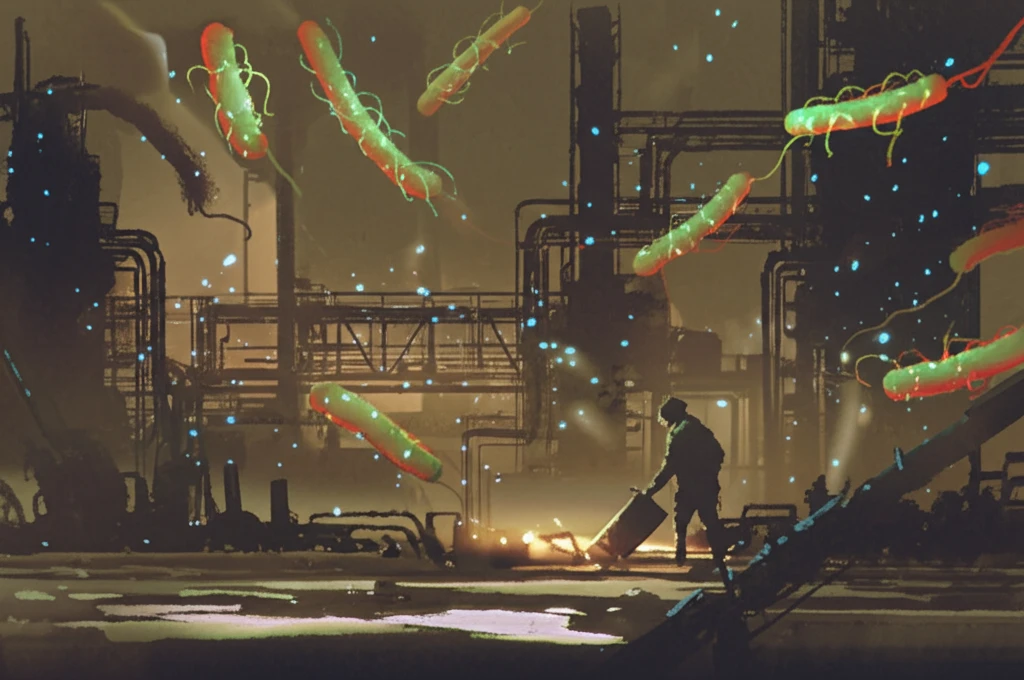
Turning Waste into Wonder: How Bacteria Could Solve Our Pollution Problems
"Discover the unsung heroes of environmental cleanup: bacteria that can break down toxic pollutants like molybdenum and phenols, offering a sustainable solution for a cleaner future."
In our modern world, heavy metals and harmful chemicals are increasingly contaminating our environment. These pollutants, often byproducts of industrial activities, pose significant threats to human health and ecological balance. Traditional cleanup methods can be costly and sometimes ineffective, prompting researchers to explore innovative, sustainable solutions.
One promising avenue lies in the realm of bioremediation, using the natural abilities of microorganisms to detoxify pollutants. Certain bacteria have evolved remarkable mechanisms to transform toxic substances into less harmful forms. Among these are bacteria capable of reducing heavy metals like molybdenum and degrading phenolic compounds, common industrial contaminants.
This article delves into the fascinating world of these microbial heroes, focusing on a specific bacterium, Enterobacter sp. strain Saw-2, and its potential for revolutionizing environmental cleanup efforts. By understanding how these microorganisms function, we can pave the way for more effective and eco-friendly strategies to combat pollution.
The Mighty Enterobacter sp. Strain Saw-2

Researchers have successfully isolated and characterized Enterobacter sp. strain Saw-2, a bacterium with a unique talent for reducing molybdenum and degrading phenolic compounds like phenol and catechol. Molybdenum, while essential in trace amounts, can become toxic at higher concentrations, especially affecting ruminant animals. Phenolic compounds, widely used in industries, are also hazardous pollutants.
- A specific pH range: 6.3-6.8
- Optimal temperature: 34-37°C
- Preferred carbon source: Glucose
- Molybdate concentrations between 15 and 30 mM
A Promising Future for Bioremediation
Enterobacter sp. strain Saw-2 represents a significant step forward in the field of bioremediation. Its ability to detoxify both heavy metals and phenolic compounds highlights the potential of microorganisms in addressing complex environmental challenges. Further research into its metabolic pathways and optimization of its activity could lead to the development of highly effective and sustainable bioremediation strategies, offering a cleaner, healthier future for our planet.
